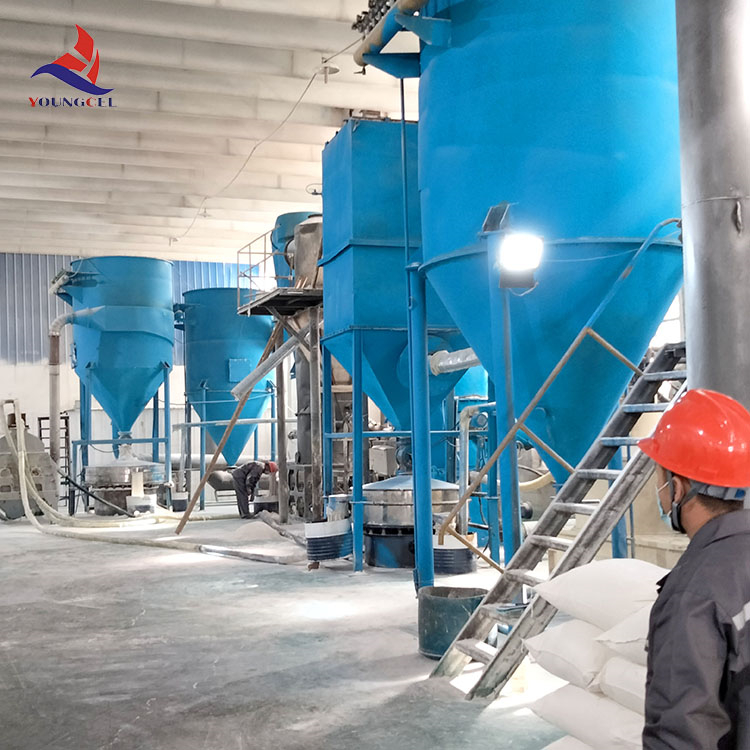Understanding Adhesion Additives Enhancing Bonding Performance
Adhesion additives play a critical role in various industries where the bonding of materials is essential. From the manufacturing of paints and coatings to the production of plastics and composites, these additives are employed to enhance the adhesion properties of different substrates, ensuring that products can withstand various environmental conditions and mechanical stresses.
At its core, adhesion refers to the ability of two different materials to bond together. This property is influenced by several factors, including surface energy, roughness, and the chemical compatibility of the materials involved. Adhesion additives are specifically designed to improve these interactions, leading to stronger, more durable bonds between surfaces.
Types of Adhesion Additives
There are several types of adhesion additives, each formulated for specific applications and substrates
. Among the most common types are1. Surface Modifiers These additives alter the surface characteristics of a material to enhance its ability to bond with other substances. By increasing surface energy or modifying surface roughness, these agents can improve the wetting properties, ultimately leading to better adhesion.
2. Curing Agents In systems that require a curing process, such as epoxy or polyurethane formulations, curing agents can enhance adhesion by promoting chemical interactions at the interface of bonded materials. These agents facilitate cross-linking, which can significantly improve the bond's structural integrity.
3. Promoters and Coupling Agents Often used in composite materials, these additives help to bridge the gap between dissimilar materials, such as polymers and fillers. They can enhance compatibility, leading to better load transfer and improved mechanical performance.
4. Dispersion Agents In paint and coating formulations, dispersion agents help to distribute pigments and fillers uniformly. This uniformity is critical for achieving consistent adhesion properties, ensuring that the coating adheres well to the substrate over its entire surface.
adhesion additive

Applications of Adhesion Additives
The application of adhesion additives spans multiple industries, including automotive, aerospace, construction, and consumer goods. In the automotive industry, for example, adhesion additives are used in coatings and sealants that require strong bonding to withstand harsh environmental conditions and mechanical stresses. In packaging, these additives improve the adhesion of inks and labels to various substrates, ensuring product branding remains intact throughout the product's lifecycle.
The aerospace sector also benefits significantly from adhesion additives, where the need for lightweight and durable materials is paramount. Here, adhesion additives help ensure bonds can withstand extreme temperatures and stresses encountered during flight.
Challenges and Considerations
While adhesion additives offer numerous benefits, they also pose certain challenges. The selection of the appropriate additive is crucial; an additive that works well in one formulation may not be effective in another. Factors such as compatibility with existing materials, processing conditions, and end-use requirements must be carefully considered.
Moreover, regulatory compliance can be a concern, especially in industries such as food packaging or healthcare. Manufacturers must ensure that the additives used do not compromise safety or environmental standards.
Conclusion
Adhesion additives are essential components in modern manufacturing processes, enhancing the performance and durability of bonded materials across a wide range of applications. As technology continues to advance, the development of new and improved adhesion additives will likely lead to even greater innovations, driving efficiency and sustainability in various industries. To maximize the benefits of these additives, a thorough understanding of their functionality, as well as the specific requirements of each application, remains crucial.
-
The Application and Significance of Construction RdpNewsMay.19,2025
-
Industrial Grade HpmcNewsMay.19,2025
-
Building Coating Adhesive Building Coating Adhesive HpmcNewsMay.19,2025
-
Application Of Hpmc For Detergent For Detergent In DetergentsNewsMay.19,2025
-
Application Of Hpmc Cellulose In Cement-Based MaterialsNewsMay.19,2025
-
Application Of High Quality Hpmc For Construction In The Field Of ConstructionNewsMay.19,2025




